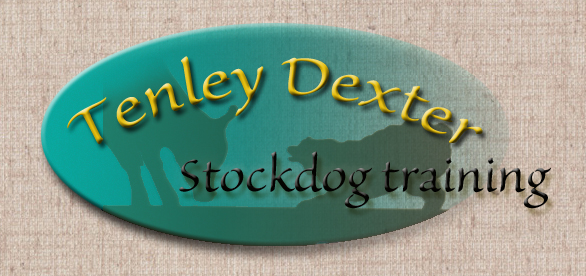“Why do stockdogs need to be trained?
I thought they came with the instinct to work stock?”
That question is frequently asked, assuming the instinctual behaviors dogs are born with are sufficient to get livestock work done. Many young dogs are simply turned loose on stock because they are “supposed to know what to do”, the stock gets run around and the owners find out in that moment they are helpless to stop what is going on. The people and their stock find out that an untrained stockdog is a liability, not an asset.
While stockdogs come preprogrammed with instinctual behaviors to one degree or another, a dog needs to be taught a communication system of commands in order for the handler to convey their desires to the dog and it also needs to be taught the manner in which the handler expects the stock to be treated as the human and dog may have very different ideas as to what constitutes appropriate treatment of the stock. Only through a training process designed to achieve these goals can the dog become an asset in the movement and management of livestock.
There are those that desire a ‘natural dog’ and are of the opinion training ruins a dog’s natural abilities so they pretty much let the dog do what it wants, unfortunately usually at the expense of the good livestock practices and the handler’s nerves. The reason we use stockdogs is to assist us with efficient livestock movement, whether on the farm or the stockdog trial arena. I want a talented natural thinking dog but the dog must be trained to carry out my desires and be in control of itself and its own desires which may not match mine at times. The higher the level of training a dog has, the less the handler needs to exert control over the dog, thus allowing the dog to use its own initiative. The fact that a handler has complete control over a dog enables the handler to allow complete freedom of the dog to think and make decisions on its own without handler interference. Any moment things aren’t working out to the handler’s satisfaction, they have the option of giving the dog a command having confidence the dog will obey. No amount of training will make a talented instinctual dog any less so if he is allowed to think and act on its own initiative.
Handlers with a less than necessary level of training on their dogs often try to over control their dogs because they don’t have the confidence the dog will comply to their commands should things get out of hand. They are often afraid to let the dog think and act on its own because they can’t get control of the dog back once given up.
“Lay each brick reverently. Lay a purposeful brick, |
. |

